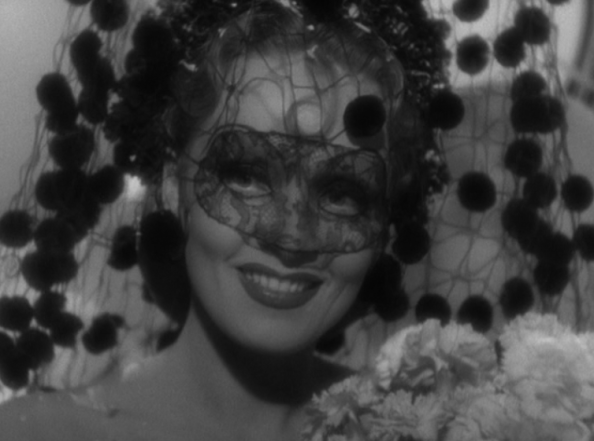
THE DEVIL IS A WOMAN, who in this case would be ‘Concha Perez’ (Marlene Dietrich), amoral Spanish man-mangler, plying her wiles in Seville at the end of the 19th century fin de siècle period that spawned revolutions, a few nasty ‘isms’ and lots of libidos working out their game plans. As her most abused victim, ‘Captain Don Pasqual Costelar’ (Lionel Atwill) tells next-in-line bewitched sap ‘Antonio Garvan’ (Cesar Romero), she’s “the singer, the toast of Spain, and the most dangerous woman you’ll ever meet.”
The 1935 release was the coup de grace of Dietrich’s seven career-building camp classics under the guidance, camera and lash of her besotted, tyrannical, wildly creative guru, director Josef von Sternberg, who when it was over declared that he and his luminous muse “have progressed as far as possible together, and my being with her will help neither her nor me.”
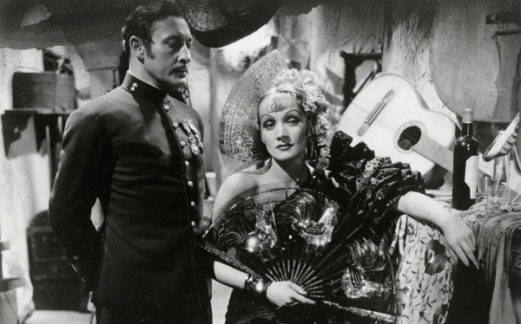
The story of illusory love, obsessive lust, broken friendship and personal degradation was the third filming of an 1898 novel by Pierre Louy. “La Femme et le Pantin/The Woman and the Puppet”, previously done in 1920 and 1929, would be reworked in 1959 with Brigitte Bardot, titled The Female in the States and A Woman Like Satan in the U.K.—Bardot, 24, in Technicolor!, I’m seduced already—and later in 1977 as Luis Bunuel’s That Obscure Object Of Desire.
“If you really loved me, you would have killed yourself.”
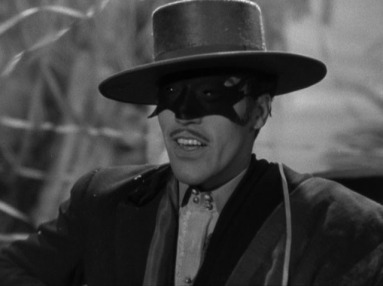
Today critics are rhapsodic, but it was roundly panned on release, and its failure followed Dietrich & Herr Direktor’s fascinating flop The Scarlet Empress, going mad for black & white Russians, but this salty Spanish sally was a disaster; the $800,000 production only took in $600,000, scraping 153rd place for the year.
When a virile revolutionary (Romero’s Antonio) goes gaga over sighting the beguiling Concha during the zany spree of Carnival, his older, wiser friend, once a respected and well-to-do officer in the Civil Guard (Atwill’s Don Pasquale), now disgraced, relates in flashbacks how the vamp ruined him, repeatedly. Will ardent Antonio listen? Does concupiscent Concha give a flying fig?
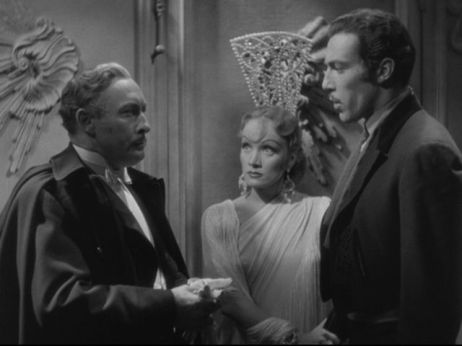
The novelist John Dos Passos penned the screenplay, and von Sternberg unleashed his visual flamboyance in a symbolic representation of the star and director’s svengali-siren offscreen relationship, which had frayed by now to the breaking point. The aesthetically preoccupied von Sternberg might have been too consumed by cloaking his ode in technique, but the politically minded Dos Passos surely knew Spain was on the brink of trauma. In his autobiography, “Fun In A Chinese Laundry” Sternberg called it his “salute to the Spanish people”, but their humorless authorities saw the portrayal of class divides and corrupt officialdom “an insult to Spain and to the Spaniards.” They banned it. Paramount, under pressure from power bigger than a studio could wield, destroyed their prints after the trouncing from critics, public and higher authorities. *
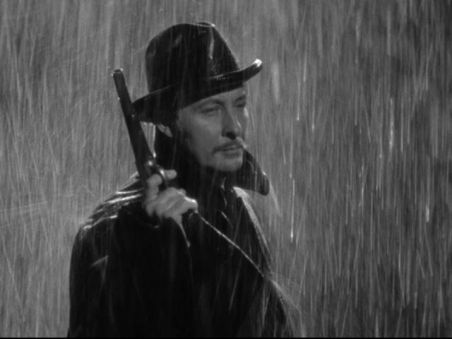
It’s a visual feast, certainly an odd humorous watch, with Atwill (bearing a definite physical likeness to von Sternberg) and Romero playing it straight, while Dietrich seems to have been told to go full tongue-in-cheek, and secondary characters ham it up like revolt was in the air. A bearded Edward Everett Horton displays great bursts of booming gusto, totally unlike his usual flummoxed timidity, as the corrupt governor, another hostage to ego flattery and p-teasing under the eye-batting domination of the shameless devil-girl.
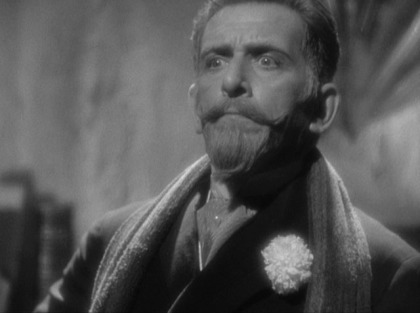
Taking credit for the striking cinematography (done by Lucien Ballard), von Sternberg let’s go with a riotous carnival sequence and other passages of rampant atmosphere enjoined through highly detailed lighting, art direction and costume design (including Travis Banton’s numerous creations for the star) and a general mood of abandon and moral rot. For the dueling sequence in the forest, he had everything spray-painted with aluminum to achieved his desired effect. Familiar melodies associated with Spain like “España Cani” and “Malagueña” add to the exotic flavor, contributed by the prodigious, uncredited Heinz Roemheld and John Leipold. Hans Dreier was in charge of the Art Direction. “In charge” as opposed to “command”, which was all von Sternberg’s, who didn’t credit Dreier.
Dietrich is gorgeously lit, posed, shot and adorned, and though she was berated by the director, you wouldn’t know it from the coy merriment and nervous energy she exudes, as kitty-vixen expressions flit across her face and in her eyes at light-speed, doling out measures of self-awareness, quick-blink cunning and imperious dismissal.
With Alison Skipworth, Don Alvarado, Tempe Pigott, Francisco Moreno. 79 minutes.
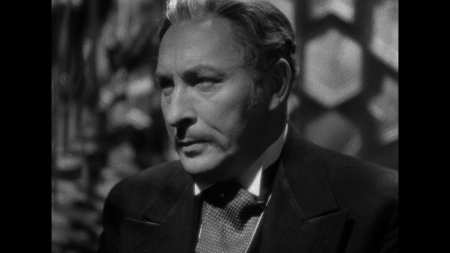
* The movie’s backstory fairly seethes with tendrils of one type of intrigue or another.
17 indecorous minutes were cut to placate the censors, including a song, “If It Isn’t Pain, Then It Isn’t Love”. After Franco’s fascists triumphed in Spain, the movie was fully banned; with the studio destroying prints, it disappeared from the planet until the director showed his copy in 1959.
 Dos Passos, who called the movie capital “the world’s great bullshit center”, wrote Ernest Hemingway after landing in Hollywood, “I’ve just signed up to serve a term of five weeks in Hollywood teaching Spanish or something like that to Von Sternberg.” As someone undone by an excess of zeal, Atwill’s stirred and shaken sex-casualty was a harbinger of the actors own scandal and fall from showbiz grace in the early 40s. Romero, 28, playing a revolutionary was in his blood: his grandfather was José Marti, legendary Cuban poet and rebel against Spain.
Dos Passos, who called the movie capital “the world’s great bullshit center”, wrote Ernest Hemingway after landing in Hollywood, “I’ve just signed up to serve a term of five weeks in Hollywood teaching Spanish or something like that to Von Sternberg.” As someone undone by an excess of zeal, Atwill’s stirred and shaken sex-casualty was a harbinger of the actors own scandal and fall from showbiz grace in the early 40s. Romero, 28, playing a revolutionary was in his blood: his grandfather was José Marti, legendary Cuban poet and rebel against Spain.
Romero: “von Sternberg made everyone’s life miserable…but he was especially mean to Dietrich. He bawled her out in front of everyone, made her repeat difficult scenes endlessly and needlessly until she just cried and cried. ‘Do it again!’ he shouted. ‘Faster!….Slower!….’ Well, he had been mad about her, after all, and now that their relationship was ending he took it out on her and everybody else.”
Though it may have been an ordeal to film, Dietrich cited it as her favorite “because I was most beautiful in it.” True. The print she kept was used for the eventual restoration, one reason it looks so good today. The director’s career went into prolonged decline, hers revived and endured. Meanwhile in España, their horrible civil war would start a little over a year later, in July of 1936.



No inclination to watch the movie but I will ensure the use of “concupsient” in a the workplace today. Thanks:)
As well you should, but make sure you spell it correctly–I didn’t, and had to fix the thing. Serves me right for being a wise-a.